
Perth is a centrally located Scottish city, on the banks of the River Tay. It is the administrative centre of Perth and Kinross council area and is the historic county town of Perthshire. It had a population of about 47,430 in 2018. There has been a settlement at Perth since prehistoric times. It is a natural mound raised slightly above the flood plain of the Tay. The area surrounding the modern city is known to have been occupied ever since the arrival of Mesolithic hunter-gatherers. Nearby Neolithic standing stones and circles date from about 4,000 BC, a period that followed the introduction of farming into the area. Close to Perth is Scone Abbey, which formerly housed the Stone of Scone, on which the King of Scots were traditionally crowned. This enhanced the early importance of the city, and Perth became known as a "capital" of Scotland due to the frequent residence there of the royal court. Royal burgh status was given to the city by King William the Lion in the early 12th century. The city became one of the richest burghs in the country, engaging in trade with France, the Low Countries, and the Baltic countries, and importing goods such as Spanish silk and French wine.
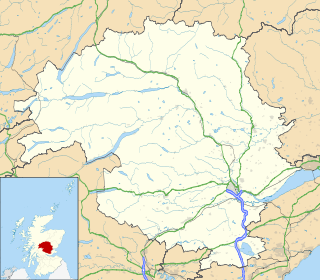
Perth and Kinross is one of the 32 council areas of Scotland, and a lieutenancy area. It is bordered by Highland and Aberdeenshire to the north, Angus, Dundee, and Fife to the east, Clackmannanshire to the south, and Stirling and Argyll and Bute to the west.
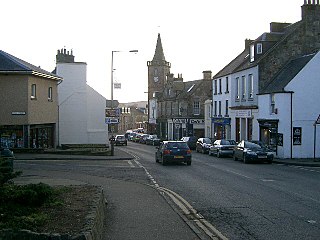
Kinross is a burgh in Perth and Kinross, Scotland, around 13 miles south of Perth and around 20 miles northwest of Edinburgh. It is the traditional county town of the historic county of Kinross-shire.
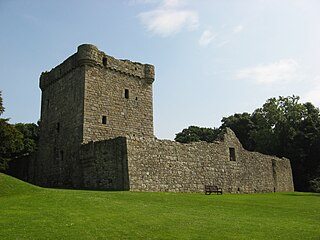
Lochleven Castle is a ruined castle on an island in Loch Leven, in the Perth and Kinross local authority area of Scotland. Possibly built around 1300, the castle was the site of military action during the Wars of Scottish Independence (1296–1357). In the latter part of the 14th century, the castle was granted to William Douglas, 1st Earl of Douglas, by his uncle. It remained in the Douglases' hands for the next 300 years. Mary, Queen of Scots, was imprisoned there in 1567–68, and forced to abdicate as queen, before escaping with the help of her gaoler's family. In 1588, the queen's gaoler inherited the title of Earl of Morton, and moved away from the castle. In 1675, Sir William Bruce, an architect, bought the castle and used it as a focal point for his garden; it was never again used as a residence.

Dunning is a small village in Perth and Kinross in Scotland with a population of about 1,000. The village centres around the 12th–13th century former parish church of St. Serf, where the Dupplin Cross is displayed. It is in Strathearn, north of the Ochil Hills. It is just south of the A9, between Auchterarder and Perth.

Abernethy is a village and former burgh in the Perth and Kinross council area and historic county of Perthshire, in the east central Lowlands of Scotland. The village is situated in rural Strathearn, 8 miles (13 km) south-east of the city of Perth, near the River Earn's confluence with the River Tay and on the northern edge of the Ochil Hills.

Meigle is a village in Strathmore, Scotland. It lies in the council area of Perth and Kinross in the Coupar Angus and Meigle ward. It lies on the A94 road between Perth and Forfar.The A94 used to be the main route between Aberdeen and Perth. Other smaller settlements nearby are Balkeerie, Kirkinch and Kinloch. Meigle is accessed from the north and south via the B954 road. In 1971 it had a population of 357.
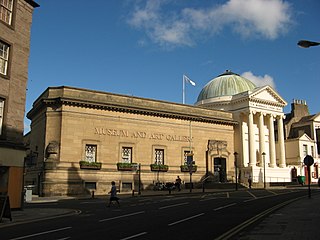
Perth Art Gallery is the principal art gallery and exhibition space in the city of Perth, Scotland. It is located partly in the Marshall Monument, named in memory of Thomas Hay Marshall, a former provost of Perth.
Innerpeffray railway station served the hamlets of Innerpeffray and Millhills in the Scottish county of Perth and Kinross.
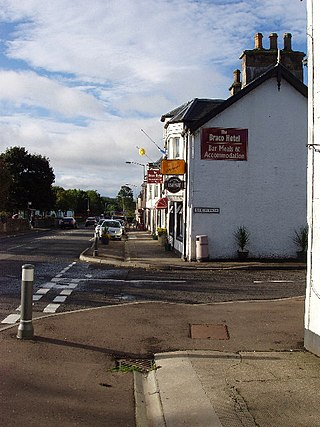
Braco is a village in Perth and Kinross, Scotland, with a population of 515. It is located 5 miles north of Dunblane towards Perth off the A9 road.
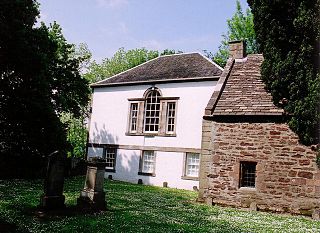
Innerpeffray Library was the first lending library in Scotland. It is located in the hamlet of Innerpeffray, by the River Earn in Perth and Kinross, 4 miles southeast of Crieff. The library building is Category A listed.

Fowlis Wester, also spelt Fowlis-Wester, is a small village in Perth and Kinross, Scotland. It is around 6 kilometres (3.7 mi) east of Crieff and 19 kilometres (12 mi) west of Perth. The parish of Fowlis Wester includes the Abercairny estate to the south-west.

Innerpeffray is a hamlet in Perthshire, Scotland, 4 miles (6.4 km) southeast of Crieff. It is located on a raised promontory among beech woodland above the River Earn. A fording point across the river can still be used, on what is the line of a Roman Road.
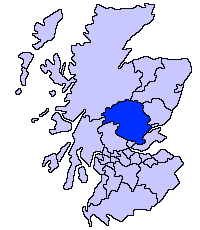
A scheduled monument in Scotland is a nationally important archaeological site or monument which is given legal protection by being placed on a list maintained by Historic Environment Scotland. The aim of scheduling is to preserve the country's most significant sites and monuments as far as possible in the form in which they have been inherited.

South Inch is a large public park in Perth, Scotland. About 31 hectares in size, it is one of two "Inches" in Perth, the other being the larger, 57-hectare (140-acre) North Inch, located half a mile across the city. The Inches were granted to the city, when it was a royal burgh, by King Robert II in 1374. Both Inches were once islands in the River Tay. The two Inches are connected by Tay Street.
Thomas Taylor (c.1770–1831) was a 19th century Church of Scotland minister, who served as Moderator of the General Assembly in 1826.

Kinnoull Parish Church is a Church of Scotland church in the Kinnoull area of Perth, Perth and Kinross, Scotland. A Kinnoull Church appears in documents when it was granted to Cambuskenneth Abbey in 1361. It was rebuilt in 1779 but demolished in 1826 after the completion of a church on the Perth side of the River Tay, which flows a short distance behind the church.

Tullibardine Chapel is an ancient church building in Tullibardine, Perth and Kinross, Scotland. It is one of the most complete medieval churches in Scotland. A large part of it dating to 1446, it is now a scheduled monument.
















